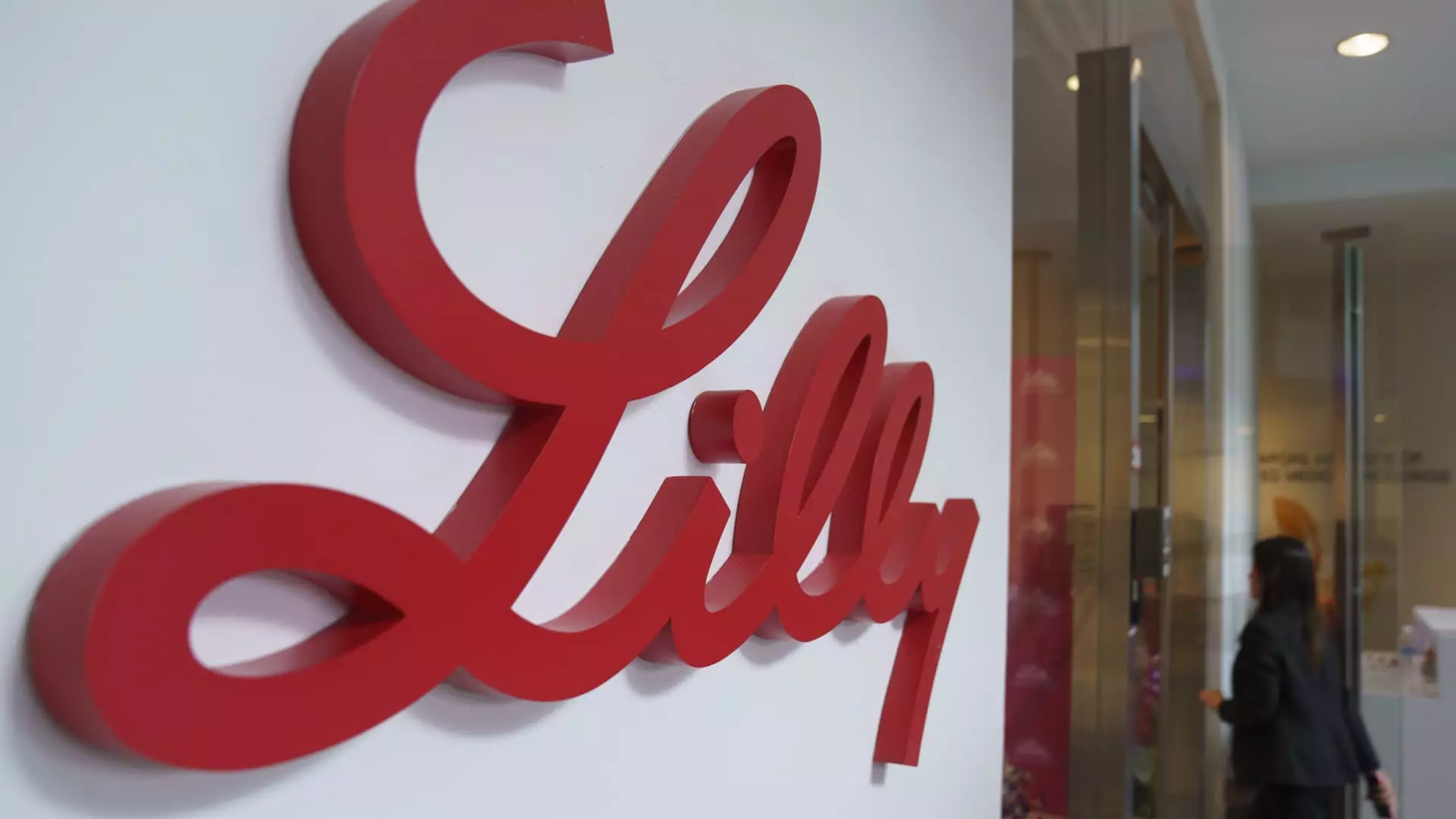Eli Lilly’s impressive unveiling of its first-quarter financial results came as a delightful surprise for investors, painting a picture of growth against a backdrop of corporate caution. The pharmaceutical titan managed to exceed expectations with revenues of $12.73 billion, marking a staggering 45% year-over-year increase. A striking 49% surge in sales within the U.S. market indicates a robust appetite for their flagship drugs, yet there’s a catch—Eli Lilly has lowered its full-year profit forecast. This juxtaposition of soaring sales paired with a decrease in profit guidance brings forth the complexity and volatility inherent in the pharmaceutical industry, leaving investors scratching their heads.
This dissonance is centered on a hefty $1.57 billion charge stemming from the company’s acquisition of an oral cancer drug from Scorpion Therapeutics. While such acquisitions can diversify portfolios and fuel long-term growth, the immediate financial ramifications are sobering. It raises critical questions: is Eli Lilly overextending itself? Is the aggressive pursuit of market expansion costing the company too much in the short term?
Market Dynamics Driven by Tariffs and Manufacturing Trends
The interview with Eli Lilly’s CEO Dave Ricks adds further intrigue to the discussion. Ricks highlighted the tariffs imposed by the prior administration as a double-edged sword—they compel pharmaceutical companies to reconsider their manufacturing footprints. By suggesting the need for a tax overhaul, particularly favoring domestic production, his statements echo sentiments prevalent among center-wing liberals who advocate for sustainable economic policies without the heavy burdens of unnecessary tariffs. The convoluted nature of economic incentives reveals a much-challenged landscape for American manufacturing, emphasizing a desire to shift production back stateside—a move that holds great potential but requires political will and clarity.
Ricks’ assertion that the current tariff structure might not be necessary is particularly compelling. How do we balance the immediate needs of American manufacturing with international economic realities? It’s a tough question, and policy formulation risks falling into a glamorous yet misleading narrative.
Blockbuster Drugs Under Pressure
Eli Lilly’s celebrated diabetes medication, Mounjaro, yielded a jaw-dropping $3.84 billion in revenue, while its weight-loss counterpart, Zepbound, generated $2.31 billion. While such exuberant sales figures evoke awe, they also mask underlying concerns. Public demand is outpacing supply, leading to an ever-widening chasm between patient need and market availability. The immense pressure to scale up production is palpable, and it remains to be seen if Eli Lilly can maintain quality alongside expansive quantity.
Moreover, these incretin treatments, which promise to revolutionize weight management and diabetes care, have become the forefront of an ethical dilemma. As access to these medications becomes competitive and sometimes unavailable, will they remain affordable? Can a company driven by profit consistently balance shareholder satisfaction with patient care? While these drugs are heralded as success stories, their availability juxtaposes critical realities about healthcare accessibility in America.
Is the Pharma Boom Sustainable?
The broader landscape of pharmaceutical investments shines a light on potential pitfalls lurking beneath growth valuations. Eli Lilly’s stock price reacted unfavorably despite its impressive earnings—down 5% in premarket trading—reinforcing the notion that market expectations do not always align with reality. Investors are acutely aware that the pharmaceutical market is unpredictable, especially with the looming uncertainties of new regulations and competitive dynamics.
As drugmakers scramble to amplify production capabilities, the concerns about lasting sustainability heighten. What will happen when the market stabilizes, and prescriptions plateau? Growth forecasts could well reflect a distorted reality, with external pressures potentially undermining Eli Lilly’s growth story.
A Cautionary Note on the Future of Pharma
In essence, Eli Lilly’s latest financial report is reminiscent of a thrilling rollercoaster ride, oscillating between exuberance and anxiety. While the euphoria surrounding blockbuster drugs is invigorating, the company also faces significant challenges both in operations and public perception.
As center-wing liberals advocate for sustainable economic policies, Eli Lilly’s journey can serve as an instructional case about the balance between profit and the public good. The imperative remains clear: to craft an inclusive, profitable landscape not merely for shareholders but for the patients who depend on these transformative treatments. Such a vision is key to ensuring that the successes of today do not come with the compromises of tomorrow.

